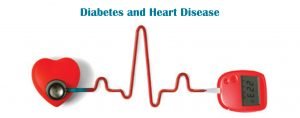Guide On Finding The Best Health Insurance Deal
Contrary to popular belief, choosing a health insurance is not as simple as just picking the most expensive one, or choosing the insurance that covers the most procedures or medications. There are specific nuances that you should look for and factors that should be considered in order to find the best health insurance deal. Luckily, we are here to help you in that regard. If you don’t have a health insurance coverage and would like to change that now, you came to the right place. This article will help you choose and compare health insurance by providing you with some tips on how to find the best health insurance deal for you. Without further ado, let’s start:
- Medication coverage
The first thing you should consider is if your routine medicines or the prescription drugs that you are already taking would be covered by the health insurance that you are considering to get. If you already have plenty of routine meds, it might be a good idea to check if an insurance provider covers most, if not all of your routine medication.
Every health insurance company features a formulary, which is a term for the list of medications that they cover. If a medication is not included in the formulary, chances are that medication might not be reimbursed, and individuals will need to go through a long procedure to get coverage.

The list of eligible medications is also separated into categories, which affect the amount of money that you may be required to pay for a copayment or coinsurance. Generate a checklist of your existing medications and match it to the insurance policy’s formulary to ensure that your medications are included and that you fully comprehend any potential expenses for medication that are not covered by the insurance policy.
- Insurance deductible policy
Another factor to consider when choosing a health insurance coverage is the policy’s deductible, which will determine how much must you spend with your own money before your insurance takes effect.
For instance, if the deductible is $1,000, the health plan will not cover the majority of the spending until after you’ve paid $1,000 from your own funds. A patient’s out of pocket expenses may also include doctor appointments, treatment charges, and in certain instances, medications.
Certain preventative care, like authorized cancer screenings as well as vaccinations, are often paid in full before the deductible is met. Individuals who choose a health insurance that features a high deductible will generally have a low monthly insurance payment, while those who choose a plan with a lower deductible would likely have a more expensive insurance payment every month.

Typically, insurers demand that a deductible be satisfied before paying the majority of medical and pharmaceutical services. Verify with your insurance company to see if your insurance coverage has a unified, consolidated deductible for healthcare and pharmaceutical services, or if they have a different deductible threshold for medications to determine the amount of money you need to spend out of pocket before your medications are compensated.
- Insurance premium
The last but not the least factor to consider is how much you will pay for the monthly premium cost. This is the price you pay to an insurance provider for insurance, regardless of whether you utilize medical and pharmaceutical services. If you quit paying your premiums on a regular basis, you run the danger of losing your policy. In addition, you will be liable for the deductible as well as coinsurance, so keep that in mind when picking an insurance coverage if you are tight on cash.






